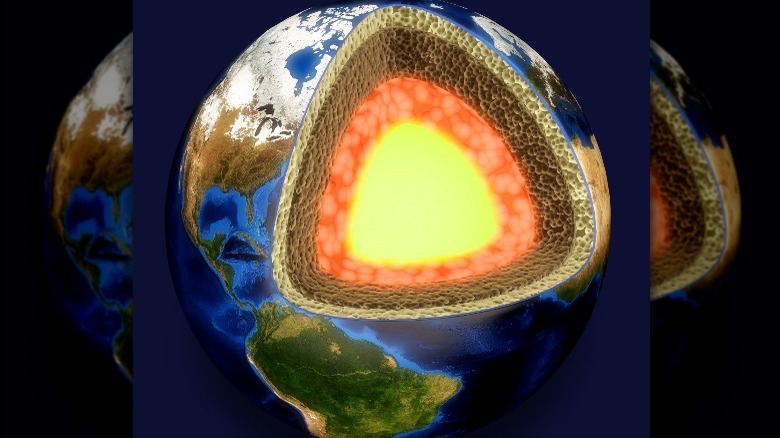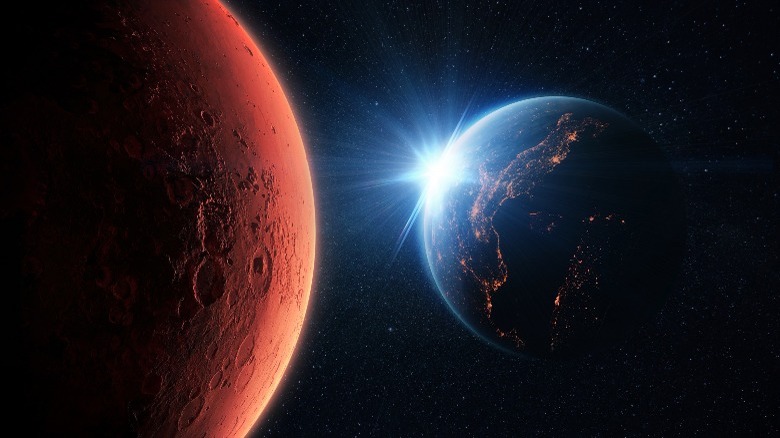How A Rare Diamond Revealed Unknown Secrets About The Earth's Crust
The properties of a diamond created deep inside the Earth may change the way we look at our own planet. Recently, a team at the Gemological Institute of America published a study in Nature Geoscience about an IaB type diamond they had examined. The diamond came from the Karowe mine in Botswana. IaB type diamonds contain unusual arrangements of nitrogen, according to Vice.
But this diamond was unusual in other ways, too. It originated about 410 miles beneath the Earth's surface, in the transition area between Earth's upper mantle (closer to the surface) and lower mantle (closer to the core) (via Live Science). The diamond contained a particular combination of minerals never before seen in a gemstone created in the Earth's mantle (via Vice). According to Newsweek, these included ringwoodite, enstatite, and ferropericlase. Ringwoodite is typically found in the transition zone between the mantles, Live Science says, but other minerals in the diamond were typical of the lower mantle. Some of them were hydrated minerals, which remove water from the oceans and take it under Earth's surface. This water then comes back to the surface via volcanic activity (via Newsweek).
Why are the hydrated minerals significant?
The presence of hydrated minerals and lower mantle minerals in the diamond suggest water can be found deeper below Earth's surface than previously thought. Scientists know there's water at least 200 miles below Earth's surface, in the upper mantle, according to Live Science. They believed, however, that the hotter, denser minerals in the lower mantle couldn't hold nearly as much water. This diamond's composition challenges that theory.
The Earth's lower mantle has been difficult for scientists to study, because it lies so far down, starting around 410 miles under the surface. The Earth's deepest borehole is only 7.5 miles. However, the lower mantle makes up 56% of Earth's total volume, making its composition significant to the construction of the planet (via Newsweek). Gemstones can be one of the best ways to study the lower mantle, since stones like this diamond can work their way up towards the surface after forming in the lower mantle (via Vice).
What are the study's implications?
The idea that water exists farther beneath the surface than previously thought may challenge scientists' previous understanding of the deep water cycle, plate tectonics, and even space exploration. The deep water cycle is the movement of water from the Earth's surface to its interior and back. This cycle may be much longer than scientists had previously estimated. If water is located deeper in Earth's interior, its journey would take more time (via Live Science).
Tingting Gu, the scientist who led the study, says she hopes it will lead to a reexamination of Earth's internal forces such as convection, or the movement of heat in the Earth's interior. Live Science explains that Earth's convection currents cause some parts of Earth's mantle to be hotter than others, which leads Earth's tectonic plates to shift over long periods of time.
Gu also notes that the presence of water deep inside the Earth is part of what makes Earth habitable, and understanding where that water came from may have implications for other planets as humans search for other habitable worlds (via Vice).


